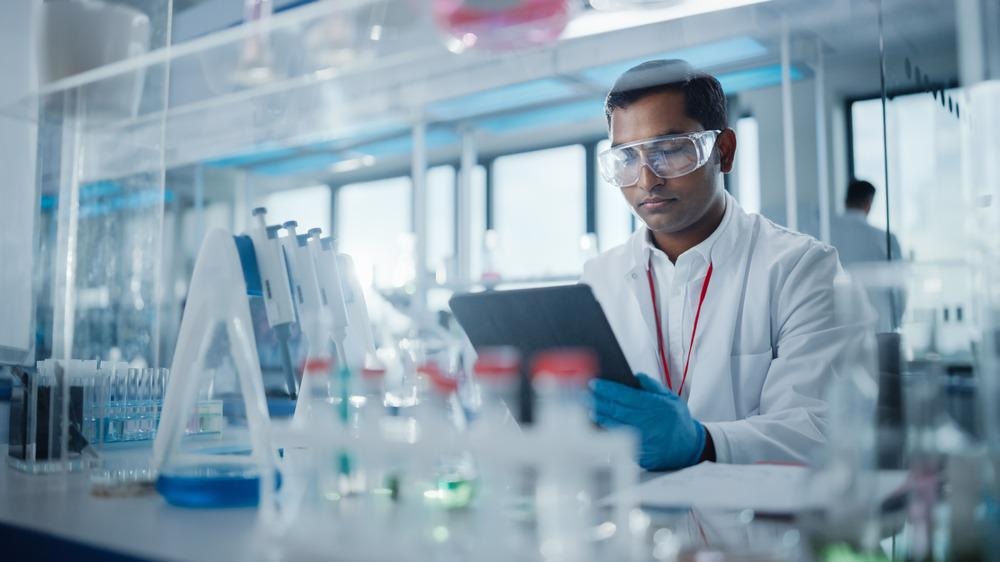In an article posted to the preprint server Research Square, researchers developed a new method to synthesize a single-sited NiNx electrocatalyst at a much lower temperature in an ordinary muffle furnace through anchoring its precursor to a surfactant-containing metal-organic coordination compound (MLM) emulsion substrate.

Study: Mass-producible High-Performance NiNx Electro-Catalyst Prepared via Surface Immobilization. Image Credit: Gorodenkoff/Shutterstock.com
The process resulted in a high yield of catalyst at a kilogram level, owing to the suppression of aggregation of precursor. The catalyst exhibited excellent tunable catalysis activity, high stability, and reproducibility during oxygen evolution and reduction reactions.
Background
Electrocatalysts are used for increasing the rate of electrochemical reactions without undergoing physical or chemical changes themselves. They are mostly present on the surface of the electrode and increase the rate of transfer of electrons between the electrode and the reactants owing to their large number of atomically dispersed active sites.
Heterogeneous electrocatalysts containing nonprecious metals such as aluminum (Al), iron (Fe), cobalt (Co), and nickel (Ni) have shown high activity and selectivity at a lower cost with a scalable size compared to platinum (Pt)-based electrocatalysts.
Transition metals with lower atomic numbers can form strong metal-oxygen (M-O) bonds that can be immobilized on a substrate to obtain single-sited metal catalysts. Here immobilization means the substrate material traps the metal atom with a strong molecular bond and transfers its vacancy defects to generate active sites on the metal surface.
However, these transition metals often tend to aggregate and form nanoparticles that hinder the immobilization and limit the number of noble metals on the substrate surface that can be processed in a single pass. Moreover, they are subjected to very harsh conditions and complex procedure, which is energy-intensive, cost-inefficient, and tedious. The synthesis of single-atom catalysts (SACs) may require a high temperature of up to 800-1100 ℃.
About the Study
In this study, researchers developed a novel method to synthesize single-sited NiNx electrocatalyst by anchoring its precursor (bis(ethylenediamine)nickel (II) chloride) (C4H16Cl2N4Ni · xH2O) to the surface of a multi-layered MLM. The immobilization through anchoring facilitated the synthesis process to occur under a temperature of 350 ℃ in an ordinary muffle furnace, which was much lower than other similar processes.
More from AZoM: What is Femtosecond Laser-Based 3D Printing?
Four MLM samples were prepared from an emulsion of cobalt nitrate (Co(NO3)2) and imidazole (C3H4N2) in water and a dichloromethane solvent mixture. SAAS-C12 surfactant was added to the emulsion to promote the anchoring to the NiNx precursor. The amino core of the intercalated SAAS-C12 surfactant dehydrated under heat to generate the C=O group, which bonded to the precursor to form the NiNxCx site. All four MLM samples were exfoliated into ultra-thin sheets/substrates in dichloromethane. The samples were denoted as MLM1, MLM2, MLM3, and MLM4 with Ni/Co ratios of 1:30, 1:15, 1:7.5, and 1:2, respectively.
Observations
Inductively coupled plasma optical emission spectrometer (ICP-OES) verified the Ni/Co ratios of all four samples. The MLM2 sample synthesized at 350 ℃ had a total yield of 75%. Powder X-ray diffraction (PXRD) did not show any peaks, indicating the complete atomic dispersion of metal and metal oxide crystallites.
X-ray photoelectron spectroscopy (XPS) analysis indicated that the Co 2p binding energy, represented by signal at 781.5 eV was stable for all MLM-350 samples, whereas the Ni 2p binding energy signal at 855.0 eV increased with an increase in the precursor amount. A new binding energy signal appeared after the thermal treatment at 288.0 eV, which was the C 1s peak representing the formation of the C=O bond due to dehydration of the SAAS-C12 surfactant. Similarly, the N 1s peak was visible around 400.2 eV.
The infrared (IR) microscopy spectra indicated a decrease in oxygen composition associated with the C=O group and an increase in N 1s peak proportionately, which confirms the reaction of NiNx moiety with the C=O group to form NiNxCx. The formation of NiNxCx proves the successful immobilization of NiNx on the MLM substrate.
Transmission electron microscopy (TEM) images showed that the multi-layered structure of MLM disappeared after the thermal treatment without any aggregation and formation of nanoparticles.
Conclusions
To conclude, the researchers of the study developed a novel facile two-step method to synthesize NiNx electrocatalyst anchored onto an MLM emulsion substrate containing SAAS-C12 surfactant. The formation of the C=O group due to the dehydration of the surfactant promoted the formation of the NiNxCx compound, which effectively immobilized the precursor on the substrate surface and formed a highly active single-site NiNx electrocatalyst.
Most importantly, the entire immobilization process was performed under 350℃, which was much lower than that of similar processes that occur at a high temperature of 800-1100 ℃, and that too without any aggregation. Hence, this emulsion and surfactant-based synthesis present a high-yield, cost-effective, and green alternative to conventional synthesis methods.
*Important Notice
Research Square publishes preliminary scientific reports that are not peer-reviewed and, therefore, should not be regarded as conclusive, guide clinical practice/health-related behavior, or be treated as established information.
Disclaimer: The views expressed here are those of the author expressed in their private capacity and do not necessarily represent the views of AZoM.com Limited T/A AZoNetwork the owner and operator of this website. This disclaimer forms part of the Terms and conditions of use of this website.
Source:
Hou, Q., Liu, K., Huang, Y., Maksoud, W., Yang, P., Ding, De., Yang, N., Luo, T., Lei, Y., Zhang, Y., Zheng, L., Liu, M., Lin, B., Chen, Y., Basset, J., Mass-producible High-Performance NiNx Electro-Catalyst Prepared via Surface Immobilization, Research Square 2022. https://www.researchsquare.com/article/rs-990428/v1